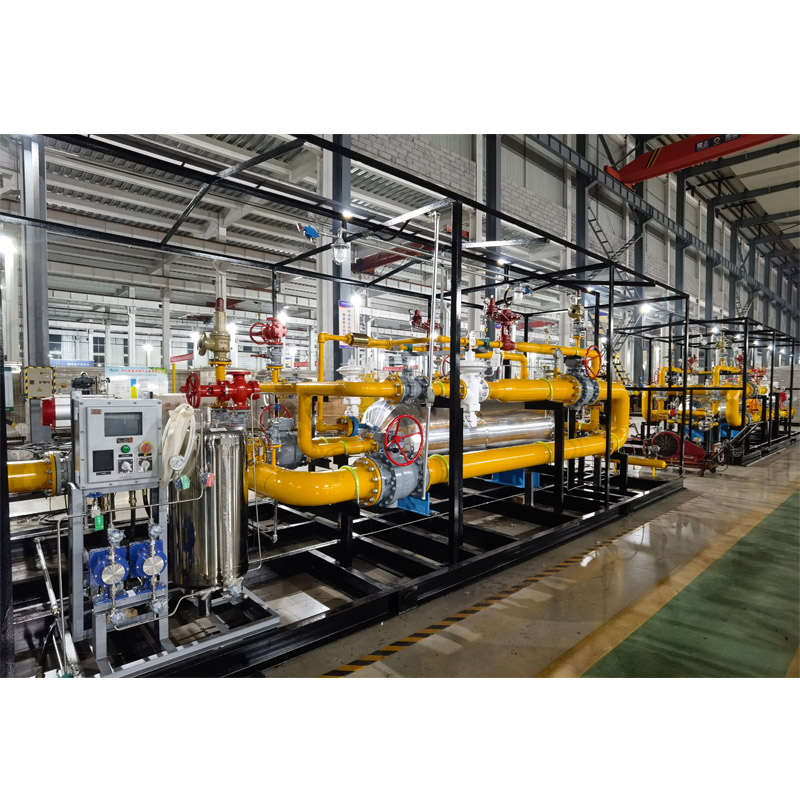
Dec . 09, 2024 23:04
Back to list
Design and Applications of Gas Pressure Vessels in Industrial Settings
Understanding Gas Pressure Vessels Design, Applications, and Safety
Gas pressure vessels are critical components in many industries, including petroleum, chemical manufacturing, and energy production. These vessels are designed to contain gases at pressures significantly different from ambient pressure. Proper understanding and engineering of gas pressure vessels are essential for ensuring safety and efficiency in industrial operations.
What is a Gas Pressure Vessel?
A gas pressure vessel is a container specifically engineered to hold gases under pressure. The design of these vessels typically involves considerations for high-pressure capabilities, material choice, and safety regulations. Gas pressure vessels vary significantly in size, shape, and construction, depending on their intended use. They can range from small cylinders used for storage and transport of gases like propane or butane to large tanks used in industrial applications.
Design Considerations
When designing a gas pressure vessel, several critical factors must be taken into account
1. Material Selection The material used in the construction of a gas pressure vessel must effectively withstand the high pressures and potential corrosive nature of the contained gas. Common materials include carbon steel, stainless steel, and various alloys. The material choice influences the vessel’s durability, safety, and efficiency.
2. Thickness and Structural Integrity The vessel walls need to be thick enough to prevent rupture at the highest expected pressure. Engineers use specific formulas, like the Barlow's formula, to calculate the required thickness based on the material properties and internal pressure.
3. Design Codes and Standards Gas pressure vessels must comply with industry standards and regulatory requirements, such as the American Society of Mechanical Engineers (ASME) Boiler and Pressure Vessel Code. Following these codes ensures that the vessels are designed, constructed, and maintained in a manner that prioritizes safety.
4. Safety Features Safety is a paramount concern in gas pressure vessel design. Features like pressure relief valves, rupture disks, and pressure gauges are incorporated to prevent over-pressurization and ensure safe operation.
gas pressure vessel

Applications of Gas Pressure Vessels
Gas pressure vessels serve a wide array of functions across various industries
- Petroleum Industry These vessels are used to store and transport natural gas, propane, and other petrochemicals. They facilitate the safe handling and distribution of fuels, which are critical for energy production.
- Chemical Processing In the chemical industry, gas pressure vessels are employed for reactions involving gaseous chemicals or for storing gases under pressure. Proper management of these gases ensures efficient production processes.
- Manufacturing Many manufacturing processes require gases under pressure, such as pneumatic systems that rely on compressed air. Gas pressure vessels provide the necessary storage for these gases, ensuring smooth operation.
Safety and Regulation
Given the potential hazards associated with pressurized gases, safety regulations are stringent. Regular inspections, maintenance, and adherence to operational guidelines are crucial for preventing failures. Companies must ensure that their gas pressure vessels are equipped with appropriate safety devices and that staff are adequately trained in emergency response procedures.
Additionally, periodic testing and certification by authorized bodies help in maintaining compliance with safety standards, which protects both personnel and the environment from the catastrophic consequences of pressure vessel failures.
Conclusion
Gas pressure vessels are an integral part of numerous industrial operations that involve the storage and transportation of gases. Their design requires careful consideration of materials, structure, and safety functionalities, ensuring that they can safely contain gases at high pressures. As industries continue to innovate and expand, the role of gas pressure vessels will remain fundamental, necessitating ongoing development in engineering practices and safety regulations to match the evolving demands of the field. Adhering to these principles not only enhances operational efficiency but also safeguards human life and the environment from potential hazards associated with pressurized gases.
Latest news
-
Safety Valve Spring-Loaded Design Overpressure ProtectionNewsJul.25,2025
-
Precision Voltage Regulator AC5 Accuracy Grade PerformanceNewsJul.25,2025
-
Natural Gas Pressure Regulating Skid Industrial Pipeline ApplicationsNewsJul.25,2025
-
Natural Gas Filter Stainless Steel Mesh Element DesignNewsJul.25,2025
-
Gas Pressure Regulator Valve Direct-Acting Spring-Loaded DesignNewsJul.25,2025
-
Decompression Equipment Multi-Stage Heat Exchange System DesignNewsJul.25,2025

